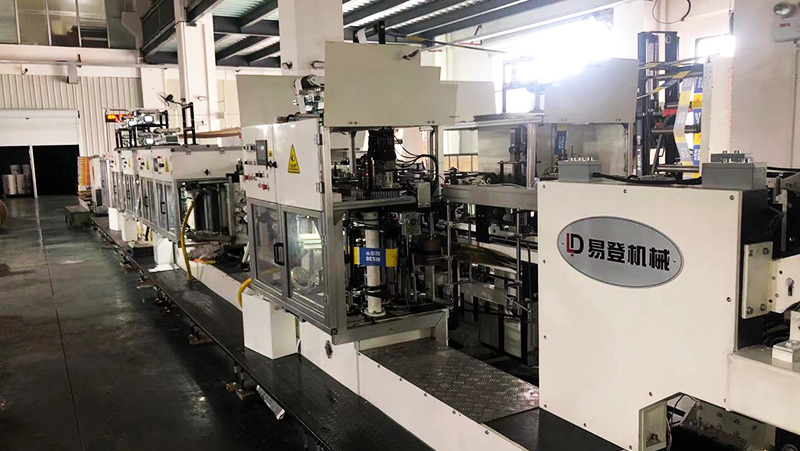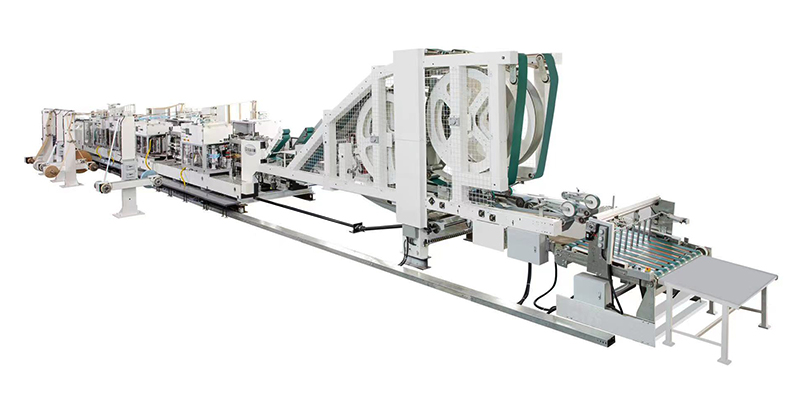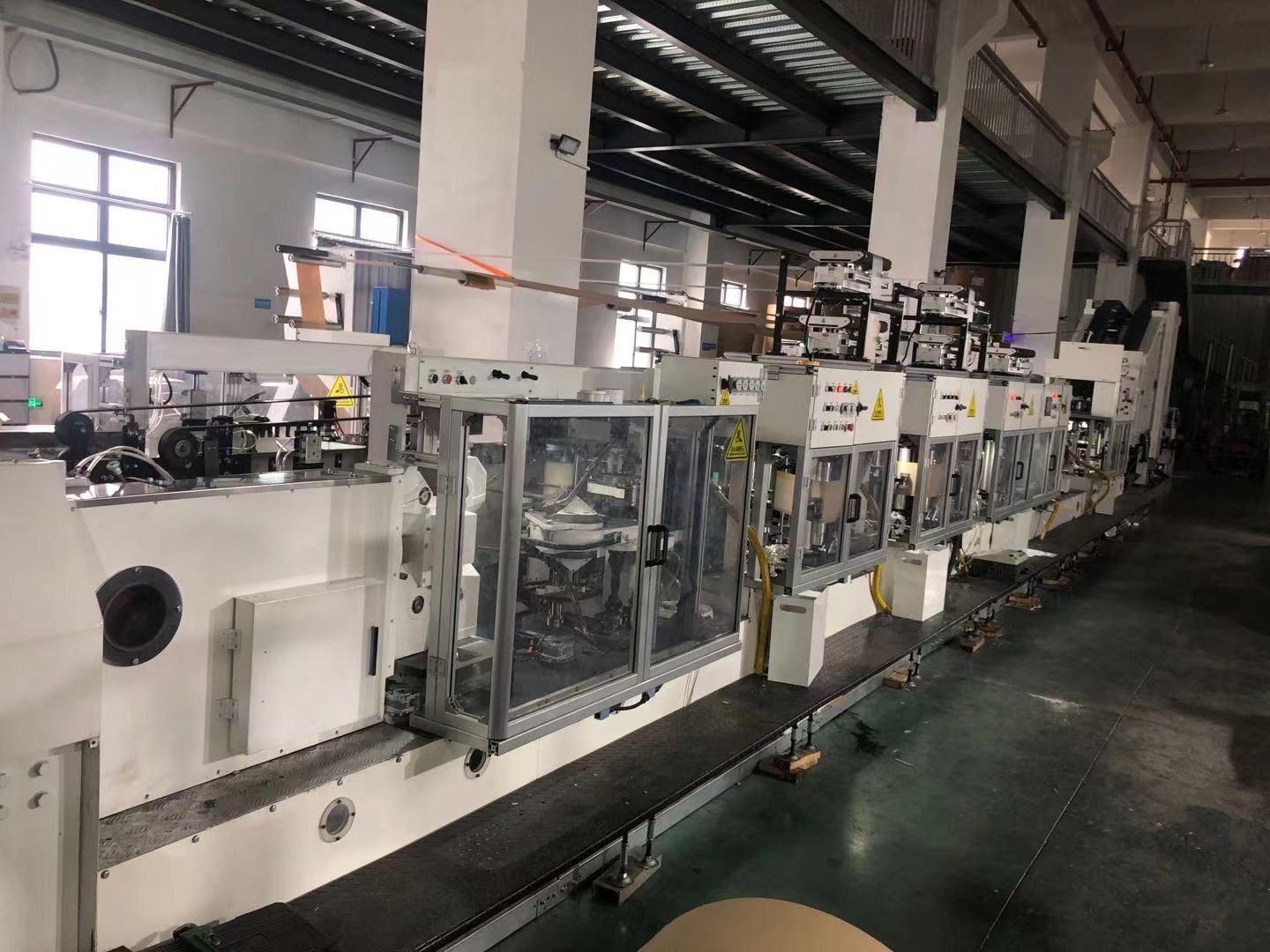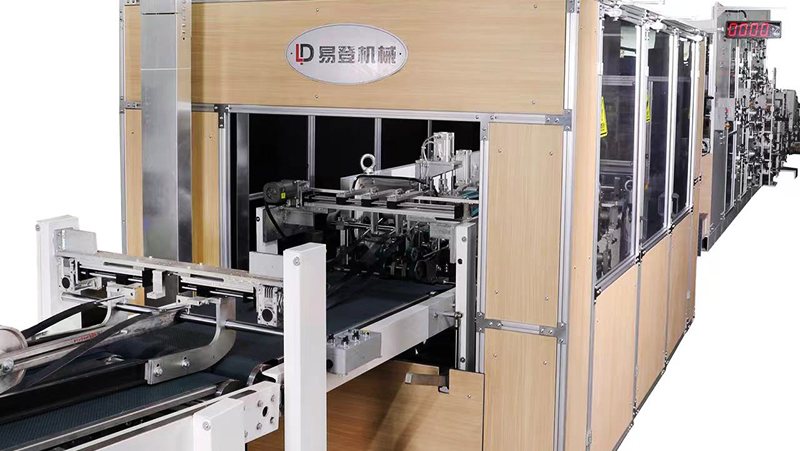The cement industry relies heavily on robust, efficient, and cost-effective packaging to protect its product during storage and transport. Cement paper bags remain the dominant solution globally, and the machinery used to produce these bags is a critical component of any modern cement plant or dedicated bagging facility. Understanding cement paper bag making machines – their types, functionalities, and the technology behind them – is essential for optimizing packaging operations.
Understanding the Core Machine Types
Cement paper bag making machines primarily fall into two categories, designed to produce the most common bag styles:
- Valve Bag Making Machines: These machines manufacture bags with a specialized valve sleeve through which cement is pneumatically filled. The valve is designed to prevent dust leakage during filling and handling. Valve bag machines typically produce bags with either a pasted valve (where the valve sleeve is glued inside the bag tube) or a sewn valve (where the valve sleeve is stitched into the bottom seam). The process involves precise forming of the tube, bottom folding, valve insertion and fixing, and bottom closure (gluing or sewing).
- Open Mouth Bag Making Machines: These machines produce bags that are open at the top for filling, usually by a spout, and then sewn or glued shut afterward. The production process involves forming the paper tube, creating the square or block bottom (which allows the bag to stand upright), and sewing or gluing the bottom. The top is left open until filling.
Key Components and Technological Features
Modern cement paper bag making machines are sophisticated systems integrating various critical components:
- Unwinding & Tension Control: Ensures consistent feeding of kraft paper rolls (often multi-ply) with precise tension to prevent wrinkles, breaks, or misalignment. Sophisticated servo controls are standard.
- Printing Unit: High-quality flexographic printing units allow for clear, durable branding, product information, handling instructions, and batch coding directly onto the paper web before forming. Registration control is vital for accuracy.
- Creasing Unit: Precisely scores the paper along fold lines to ensure clean, sharp, and consistent bottom folds and gusset formation, crucial for bag integrity and appearance.
- Tube Forming Section: Guides and folds the paper web(s) into a continuous tube, applying adhesive (hot melt or cold glue) along the longitudinal seam with high accuracy.
- Bottom Forming Unit (Block Bottom/Square Bottom): For open mouth bags, this complex section meticulously folds and interlocks the paper to create the characteristic flat, stable bottom. Precision tooling and control are paramount.
- Valve Application Unit (Valve Bags): Accurately cuts, positions, and fixes (via gluing or stitching) the valve sleeve into the forming tube at the designated location.
- Bottom Sewing/Gluing Unit: Securely closes the bottom of the bag. Sewing heads use heavy-duty threads and needles for durability, while gluing units apply precise adhesive patterns for a strong bond. Modern machines often offer switchable options.
- Cross Cutting Unit: Cuts the continuous tube into individual bags of precise, pre-set lengths using high-speed rotary knives or guillotine cutters synchronized with the forming process.
- Counting & Stacking: Automatically counts finished bags and stacks them neatly in bundles or onto pallets, ready for strapping and shipment to the filling line.
- Control System: The brain of the operation. Advanced PLC (Programmable Logic Controller) systems with intuitive HMI (Human-Machine Interface) touchscreens allow for precise parameter setting, recipe storage, real-time monitoring of production speed, counts, and diagnostics. Integration capabilities with plant networks are increasingly common.
The Production Workflow: From Roll to Finished Bag
A typical high-speed production line follows this sequence:
- Paper Feeding: Kraft paper rolls (single or multi-ply) are loaded onto unwind stands.
- Printing: The paper passes through the printing unit(s) for required markings.
- Creasing: Creasing rollers impart fold lines.
- Tube Formation: The paper is formed into a tube, and the longitudinal seam is sealed.
- Valve Insertion (Valve Bags): The valve is applied and fixed within the tube.
- Bottom Formation & Closure:
- Open Mouth: The tube is formed into a block/square bottom and sewn or glued shut.
- Valve Bag: The tube bottom is folded and glued or sewn shut (except for the valve opening).
- Cross Cutting: The continuous tube is cut into individual bags.
- Counting & Stacking: Finished bags are counted and stacked.
Why Machine Quality Matters for Cement Packaging
The demands of cement packaging are rigorous. Bags must withstand significant weight (typically 25kg or 50kg), resist abrasion, prevent dust emission, and endure stacking and handling. The machine producing them must therefore deliver:
- High Precision: Consistent dimensions, accurate printing registration, and perfect fold alignment are non-negotiable for bag functionality and filling line compatibility.
- Robust Construction: Heavy-duty frames, hardened components, and durable mechanisms are essential to handle the stresses of continuous, high-speed operation with abrasive paper.
- Reliability & Uptime: Minimizing unplanned downtime is critical for meeting production targets. Quality engineering and proven designs are fundamental.
- Speed & Efficiency: Modern machines operate at impressive speeds (often 30-60+ bags per minute), directly impacting overall packaging output.
- Flexibility: The ability to quickly switch between different bag sizes, paper weights/plies, and bottom closure types (sew/glue) adds significant value.
- Ease of Operation & Maintenance: Intuitive controls, accessible components, and good serviceability reduce operator training time and maintenance costs.
Partnering for Success: Yideng Machinery's Commitment
For over [Number, if known, otherwise omit] years, Yideng Machinery has been at the forefront of designing and manufacturing high-performance cement paper bag making machines. We understand the unique challenges of the cement industry and engineer our solutions accordingly.
Our valve bag and open mouth bag machines are built with an uncompromising focus on:
- Precision Engineering: Utilizing advanced manufacturing techniques and high-quality materials to ensure dimensional accuracy and long-term stability.
- Proven Durability: Robust designs focused on minimizing wear and maximizing service life in demanding 24/7 environments.
- Operational Efficiency: High production speeds combined with user-friendly controls and quick changeover systems to maximize your output.
- Customization: We work closely with clients to tailor machine configurations to specific bag specifications and production requirements.
- Comprehensive Support: Offering expert installation, commissioning, operator training, and readily available spare parts and technical support globally.
Investing in the Right Equipment
Choosing the appropriate cement paper bag making machine is a significant investment impacting productivity, bag quality, and overall operational costs. It requires careful consideration of your specific bag types, required output volumes, and long-term reliability needs.
Yideng Machinery provides the technology, expertise, and commitment to partner with you in building a highly efficient and reliable cement bag packaging operation. Our machines are engineered to deliver consistent, high-quality bags day in and day out, forming the dependable foundation your cement packaging process requires.
Contact Yideng Machinery today to discuss your cement paper bag production needs and discover how our advanced machinery solutions can enhance your packaging efficiency and reliability.












